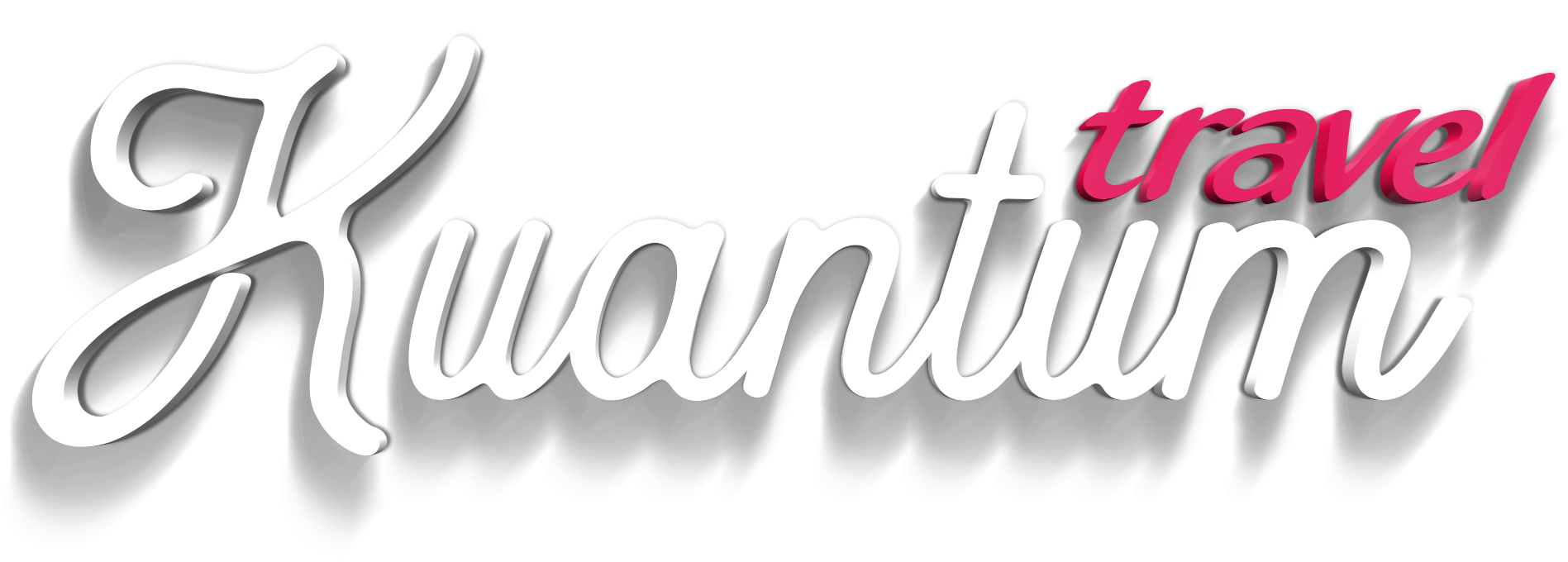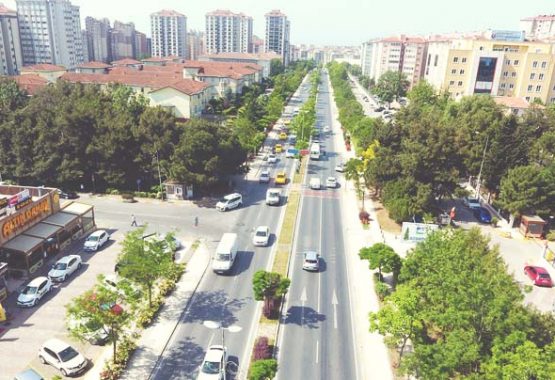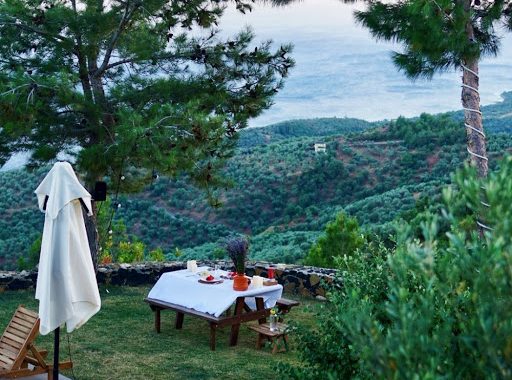LEATHER
Making the used animal skins used in various goods by processing them with the help of some chemical and herbal materials. For this purpose, the raw skin is cleaned from the hair and horn layer in the tannery and the subcutaneous fat layer. The raw leather is brought into a processed state after months of tanning (vegetable, mineral, combined, oil tanning) and finishing (leather, screw, leather). Shoes, belts, gloves, money bags, clothes, etc. It is used in the manufacture of articles. There are many varieties according to the type and processing of the leather. The most well-known are thick, hard leather used for making shoe soles, thin gazelle leather chambers made of clothing, screws (calfskin), leather (goatskin), patent leather, suede and leather. In our country, leatherworking II. It started with a tannery established in Beykoz during the reign of Mahmut (1812). Later, leather production became an important industry branch with leather factories established in various provinces.
How Is The First Processing Of The Skin Made?
The skin consists of 65 percent water, 32.5 percent protein, 2 percent fat and 0.5 percent mineral salts. It has 3 layers as top, middle and bottom. Medium leather covers 85 percent of the skin and is the processed part.
On the other hand, the quality of the skin is measured by the cleanliness of the skin. The faults on the skin are caused by the effects of the chemicals used, the wrong applications during the processes or the traces caused by the animal’s environment. The fact that the areas where the leather will be stocked is not ventilated, and that it has a cool and sun-free position is also among the critical factors affecting its quality.
During the processing of the skin, first of all, the raw skin is pickled and protected from bacteria and used without spoiling. The brine process is applied in 3 different ways: brine, by salting, pickling or drying. Vegetable products, mineral and synthetic chemicals (tannins) are used for the leather to gain a flexible structure and durability. Tanning is the whole process for the purpose of making the skin resistant to heat, moisture, bacteria and gaining technical character. The place where these transactions are carried out is called tanneries.
Production in Leather Industry
Leather is an industry where hand labor is used extensively in almost all production stages. In addition, since it does not have a standard form and is not always ready for the needs, the preparation of the raw material in line with the demands is an important production stage in the sector.
Since the innovation of the equipment used in its production affects the quality and overall efficiency of the product, the Turkish leather industry closely follows the changes in the production technology. The technology used is advanced compared to many of the rival countries. Important leather garments from China, India and Pakistan in this regard ranks far behind Turkey. On the other hand, Italy, the most important leather manufacturer in the world, is one of the countries targeted by the Turkish leather industry in terms of technology, fashion and added value.
In Turkey, raw leather, leather garments manufacturer is insufficient in responding to the needs and expectations of quality; the sector is 70-75 percent dependent on imports. Another important production input is labor. Its share in total inputs is around 15-20 percent. Compared to other countries, China, India and Pakistan are advantageous due to low wages and state subsidies in leather production.
With an annual leather processing capacity of 400,000 tons, the capacity utilization rate remains low due to the dependence on the single market in exports and unstable market movements. The crisis in the Russian market following the 1998 crisis and the fact that the suitcase trade has come to a halt have declined to 30 percent of its production capacity in the sector. After 2000, after the Russian market gave signals of recovery and producers intensified their search for exports in the European market, the sector entered into a recovery process. After 2002, the leather and leather products sector became one of the vital sectors for the country with its 2.3 percent share in manufacturing industry production and 1.5 percent share in total industrial employment.
There is no new information flow about the sector in the sources for the following years.
Tannery
It is a leather tanned factory. It comes in raw leather and leaves the factory as finished leather.
Tannery is the name given to the tanned leather factory. The hides of all kinds of animals come here as wet or salted skin, and after going through various stages, they leave the factory as tanned or finished leather. The main thing in leather tanning is to convert the skin from an organic object to an inorganic object. Tabakhane debbağ is a word that comes from the household. Debbağ was the name given to the person who worked leather in the old language, and the place where this work was done was called Debbağ household. Today, this word has come as a tannery. It was one of the important crafts in the Ottoman period. The profession had hearth furnaces, and the chief of this was Ahi Evrand. Leather processing is a demanding, labor-intensive job that needs to be done with love. Leather becomes a product through various chemical and physical processes and is offered to our service.
Every process has its own importance. Doing something wrong or missing can make the skin unusable. In the Ottoman period, there was a leather monopoly… The people of that period took various precautions in order to make the tanning of the skin in Safranbolu. Safranbolu and those who sold tanned leather did not buy shopping. He built 99-room houses… Even some fountains were brought inside the houses…
Safranbolu also commonly fed thousands of dogs in tanneries for fresh dog feces. During the sama phase where it is chemically treated after mechanical cleaning of raw skin, hair, oil and meat layers, since fresh dog feces are needed enzymes, they collect tin mops, dog feces in the hands of the children, so the batch process can only be smoked, as the smog process can be made. they brought them to tanneries …
The workshops where the skins of the animals were processed ignited for dog feces. Because the skin kept in a single fresh dog stool could be soft, free from hair follicles, open pores, thin, homogeneous, that is, quality. For this reason, dog farms have been established… Thousands of dogs have been fed, produced and even a systematic business organization has been established to raise the dog’s feces before it dries hot and dry.
Technical Information About Genuine Leather
“Genuine leather is a by-product obtained after the production of meat from cattle and small cattle. Special knives are used to remove cuts and holes in the removal of the skin.”
The skin taken should be pickled immediately after a short cooling period to prevent micro-organisms from damaging the skin protein. This process is important to preserve the skin for a long time in cases where the skin cannot be processed fresh. Otherwise, the durability of the skin decreases.
As the next process, tanning process is applied to the skin; tanning is a process in which the skin layer is exposed and the skin fiber tissue is prepared for the process to be applied later. There are different methods such as whitewash, sweating, sama.
Another application is wet finishing.With this application, it distinguishes the skin fibers and connects the bundles of fiber to each other, and gives the skin durability, so that the skin is not affected by microorganisms and is resistant to temperature.In this process, the thickness of the skin of the halves in the splitting machine is ensured by the shaving process. Wet finishing processes cover all of the works applied to tanned, split and shaved leather. Properties such as light, sweat, and washing fastness are expected from the dyeing process according to the leather to be produced.
Then, depending on the properties of the finished leather, drying is applied to the skin with one or more of the methods such as vine drying, stretching drying, vacuum.
Finishes
Finishing process is regulated according to the usage characteristics of the skin-made process. Pigment or aniline paint is used for coloring the finishing layer.
The objectives of the finishing process can be listed as follows.
Skin surface gains resistance against external factors
Ensuring that the product surface gets smooth and different shine upon request
Providing different pattern and color features on the leather surface upon request
Increasing the usage value of leather
Upholstery leathers are diversified under the following titles.
Aniline Skin Leather
It is a type of dye that penetrates the skin. These kinds of leathers are more delicate than other leathers since they do not contain any surface coating, and it is the type of skin in which the wounds or bush scratches encountered by the animal are natural on the skin surface.
Semi Analine Leather
Aniline is a type of leather in which pigments are dyed together with the dye.
Nubuck
It is a leather type produced by a special finishing and sanding technique, obtained from the top of the leather.
Suede
It was also produced with special sanding and finishing technique and obtained from the bottom of the skin.
Baycast
It is a leather type that is covered by the leather finishing technique after the skin splitting process.
Pull-Up Tumbled
Special production leather; It is a type of leather that turns on color when stretched and creates a rutic and moire image effect.
Madras Leather
It is the most preferred leather type after the skin in the world, which is obtained by various finishing and printing methods after removal of the upper skin layer.
Split Leather
It is called the completely removed bottom of the skin layer of the skin.
Sanding
Treatment on the surface of the skin to eliminate traces from the natural life of the skin
Printing
They are motifs applied to the surface of the skin to give the leather its preferred appearance or to destroy its natural appearance.






